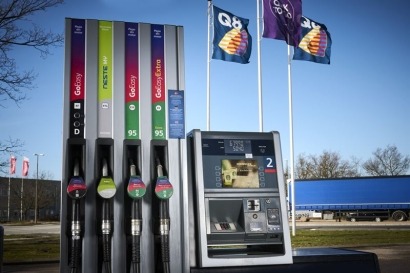
A new collaboration between Q8 Denmark and Neste, the world's largest producer of renewable diesel, will help Danish transport companies to significantly reduce greenhouse gas emissions of their existing fleet by switching fossil diesel to renewable diesel, also known as “HVO100”.
Initially, the renewable diesel was made available to heavy transport at nine stations on April 17.
"We are facing a major restructuring of the transport sector in the coming years, and we are experiencing increasing demand from our business customers in particular for products that can contribute to reducing the climate footprint. Biofuels will be crucial in achieving the necessary reductions in the coming years, not least for heavy transport. Therefore, the partnership with Neste is central to our general ambition to minimize the climate footprint both for ourselves and our customers," says Retail Director at Q8, Helle Dahlgren Skov.
"We are very excited to expand our Neste MY Renewable Diesel offering in Europe, this time in Denmark in collaboration with Q8. We firmly believe that all solutions are needed to reduce transportation-related emissions and support the sector’s contribution to the EU-level target of reaching carbon neutrality by 2050.
"Neste MY Renewable Diesel use does not require any modifications to existing engines, vehicles or fuel distribution infrastructure. By fueling Neste-produced renewable diesel, greenhouse gas (CO2e) emissions can be reduced by up to 90 percent* over the life cycle of the fuel when compared to fossil diesel. We are committed to supporting our customers to reduce greenhouse gas emissions by at least 20 million tons annually by 2030," says Christian Pettersson, Head of Branded Sales, Renewable Road Transportation business unit at Neste.
The goal of the collaboration between Q8 and Neste is to enable the heavy transport sector throughout Denmark to reduce emissions. Neste MY Renewable Diesel is made available at stations on routes with very heavy transport around Denmark.
*) The life cycle emissions and emission reduction calculations complies with the EU Renewable Energy Directive II (2018/2001/EU).

